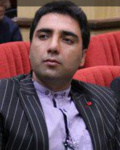| نویسندگان | Heydar sadeghi,Saeed Ilbeigi,Zahra Ebrahimababdi,Maryam Kakavand,Erik Wikestrom |
|---|
| نشریه | Journal of Biomechanics |
|---|
| شماره صفحات | 1-6 |
|---|
| شماره سریال | 108 |
|---|
| ضریب تاثیر (IF) | 2.496 |
|---|
| نوع مقاله | Full Paper |
|---|
| تاریخ انتشار | 2020 |
|---|
| رتبه نشریه | ISI |
|---|
| نوع نشریه | الکترونیکی |
|---|
| کشور محل چاپ | ایران |
|---|
| نمایه نشریه | JCR،Scopus |
|---|
چکیده مقاله
Abstract
The aim of the current study was to determine differences in center of pressure (COP)excursion and muscle activation during gait initiation (GI) in those with and without chronic ankle instability (CAI). Thirty-four participants, 17 per group, volunteered to participate. Participants were asked to stand barefoot on a force plate before initiating gait upon hearing an auditory cue. Reaction time, anticipatory postural adjustment phase time, as well as normalized peak COP excursion during the anticipatory postural adjustment phase was calculated. Response time of Soleus and Tibialis Anterior muscles were concurrently recorded via electromyography. The results demonstrate a longer reaction time and shorter anticipatory postural adjustment phase time in the CAI group (p<0.05). No significant between group differences in peak normalized COP excursion were noted (p>0.05). Muscle onset patterns differed between groups as those with CAI demonstrated earlier Soleus activation compared to the control group (p<0.05).The results suggest that those with CAI have an altered GI motor control strategy as evidenced by reduced or absent Soleus muscle inhibition during APA phase of GI relative to controls. The APA phase is controlled by the secondary motor area, therefore, the presence of motor control alterations in CAI patients may be due to a supra-spinal alterations.
لینک ثابت مقاله
